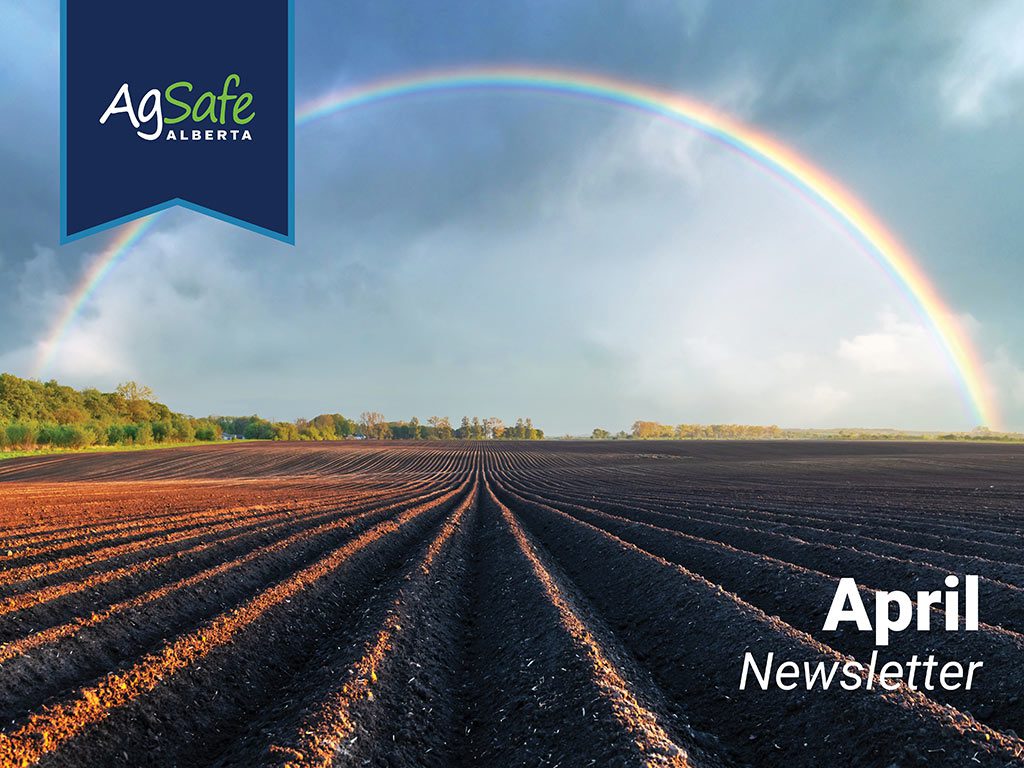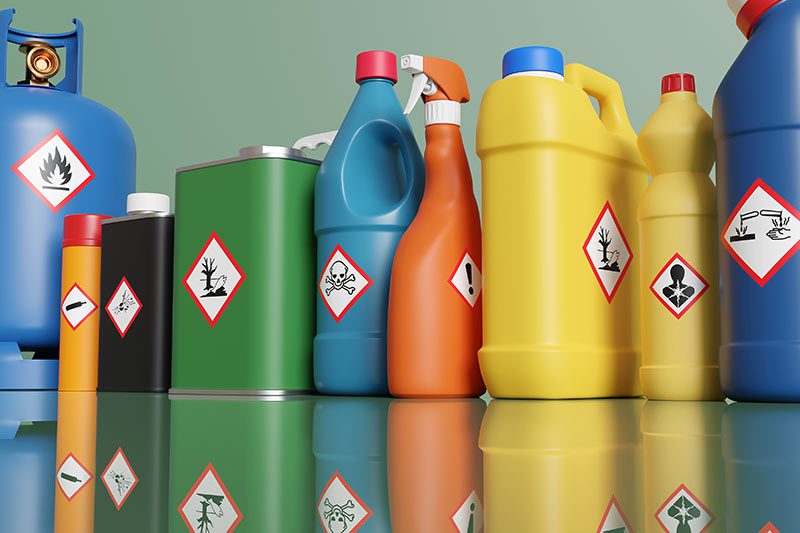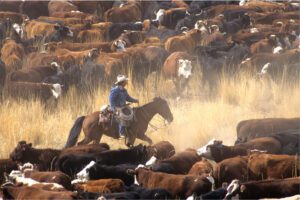

Our New WHMIS Course Has Launched!
On Jan. 4, 2023, amendments were made to the Hazardous Products Regulations in Canada. These changes were made to further align with the Globally Harmonized System of Classification and Labelling of Chemicals (GHS).
A three-year transition period, ending on Dec. 14, 2025, was put in place to allow suppliers, employers and workers time to adjust to these changes.
AgSafe Alberta has released our updated and improved Workplace Hazardous Materials Information System (WHMIS), Pesticide, Veterinary Drug and Medicated Feed Awareness Course and supporting manual.
This new course:
- Has been designed to be both quicker & easier to complete.
- Has been improved to reflect user feedback where possible.
- Reflects changes to the Globally Harmonized System of Classification and Labelling of Chemicals (GHS).
- Gives you immediate access to your Certificate of Completion inside the course itself! Each certificate is also assigned its very own unique identification for verification purposes.
Try this course and get your seasonal staff trained for FREE until June 30, 2025, using Promo Code GHS2025! Click HERE to get started.
Important Online Learning Course Update
To better support everyone taking our online courses, AgSafe Alberta is excited to announce that we are transitioning to generating Certificates of Completion directly within the courses. This is now possible thanks to advances in our online learning platform.
This means that as soon as you finish a course, you’ll have immediate access to your certificate! Each certificate will have its own unique identification number for added security.
We appreciate your patience during this transition. If you have any questions, please email us at info@agsafeab.ca for assistance.

If you have farm-specific health and safety questions or require support relating to health and safety on your farm, please contact AgSafe Alberta at info@agsafeab.ca.
You may be eligible for onsite farm visits and up to 10 hours of advisor support at no cost!

Safety Data Sheets Need to Be Kept Current
Many people mistakenly think that hazardous product labels and safety data sheets (SDSs) don’t change, but that is just not true.
SDSs need to be kept current. There are two good reasons for this:
- Product formulations can and do change for many reasons, such as ingredient cost and ingredient availability.
- The science around substances and the studies that relate to them are ongoing. This can be seen in the Occupational exposure limits for chemical substances in Schedule 1 of the Alberta Occupational Health and Safety Code; what is found in these tables can change as a result of new studies and regular reviews performed by the American Conference of Governmental Industrial Hygienists (ACGIH).
Learn more in our updated Workplace Hazardous Materials Information System (WHMIS), Pesticide, Veterinary Drug and Medicated Feed Awareness Course or download the manual for FREE.
Power Line Safety

Last spring a farmer in Saskatchewan made the news after hitting a transmission tower while seeding. Luckily, he walked away without injuries because he knew what to do!
You can watch a video of the contact on X by clicking HERE.
As you prepare to get busy out in the fields, set aside time to talk to family members and your farm team about powerline safety, using these resources:
- Fortis Alberta: Farm Safety Infographic
- Utility Safety Partners: Where’s The Line? – Surviving a Contact Video
- Utility Safety Partners: Where’s The Line? – Height of Danger: Transporting High Loads Video
- Fortis Alberta: Power Line Safety for Workers Video
- Utility Safety Partners: ABCGA – Homeowner’s Digging Safely
Don’t forget to go the AgSafe Alberta Store and order stickers for inside the cabs of your equipment that detail what to do following an overhead powerline contact. Click HERE to place your order.
April 28 is the National Day of Mourning

According to the Association of Workers’ Compensation Boards of Canada (AWCBC), in 2022, there were 993 workplace fatalities recorded in Canada. Imagine how much higher this number could be if it also included family farms across the country.
The National Day of Mourning is a day to remember and honour those lives lost or injured due to a work-related incident. It’s also time to renew our commitment to improving health and to preventing further injuries, illnesses and deaths.
Show your support and commitment to safety, both on and off the farm, by sharing our social media post or, if you feel inclined, honouring someone you knew and lost as a result of their work. Farmers tend not to talk openly about when things have gone wrong, so these messages help to remind others to put health and safety at the forefront of their work. We hope this will help prevent additional work-related injuries and loss of life.

Threads of Life is the Association for Workplace Tragedy Family Support. It is a registered charity dedicated to supporting families after a workplace fatality, life-altering injury or occupational disease. If you are looking to volunteer, get resources or find support, visit their website at threadsoflife.ca.
Below are two of many Day of Mourning Videos posted by Threads of Life on YouTube:
Mental Health Impact of Livestock Diseases & Depopulation

A study was published in the Journal of Agromedicine that looked at the mental health impact of livestock diseases and depopulation on farmers. While the study group was notably small (consisting of only 20 farmers, veterinarians, and industry experts), it will hopefully encourage further research and development of measures that can better support affected producers.
The study identified and detailed five themes:
- Emotional Distress
- This included shock, helplessness, anxiety, hypervigilance (excessive, heightened awareness), despondency loss (being very low in spirits, results from a loss of hope or courage), decreasing motivation, as well as fear of judgement and stigma (people having poor opinions and beliefs about them).
- Threats to Identity
- This can include not seeing oneself as a good or productive farmer and feeling like a failure.
- This affected self worth to the point some farmers quit farming.
- Economic Burden
- The significant costs associated with this (loss of income, reliance on credit or loans, putting new measures in place, etc.) added to stress levels.
- Distrust and Frustration with Authorities
- To quote the study, “Interactions with authorities often heightened farmer’s distress, leaving many feeling misunderstood, unsupported, and unfairly penalized.”
- Resilience and Adaptation
- In true farmer fashion, many found emotional relief by keeping busy and distracting themselves with their work.
- Adapted Emergency Management Framework
- The study emphasized addressing these earlier themes in your emergency planning. You can learn more about emergency preparedness and management in Module 7: Emergency Preparedness & Management of the Alberta FarmSafe Plan Manual.
- Examples include things like raising awareness of biosecurity protocols and mental health literacy as a part of your preventative measures.
Source: Purc-Stephenson, R. J., & Doctor, J. (2025). “The Hill in Front of You”: A Qualitative Study of the Mental Health Impact of Livestock Diseases and Depopulation on Farmers. Journal of Agromedicine, 1–10. https://doi.org/10.1080/1059924X.2025.2470967
Click on the following link to read the full article and learn more: “The Hill in Front of You”: A Qualitative Study of the Mental Health Impact of Livestock Diseases and Depopulation on Farmers
CONTACT US
